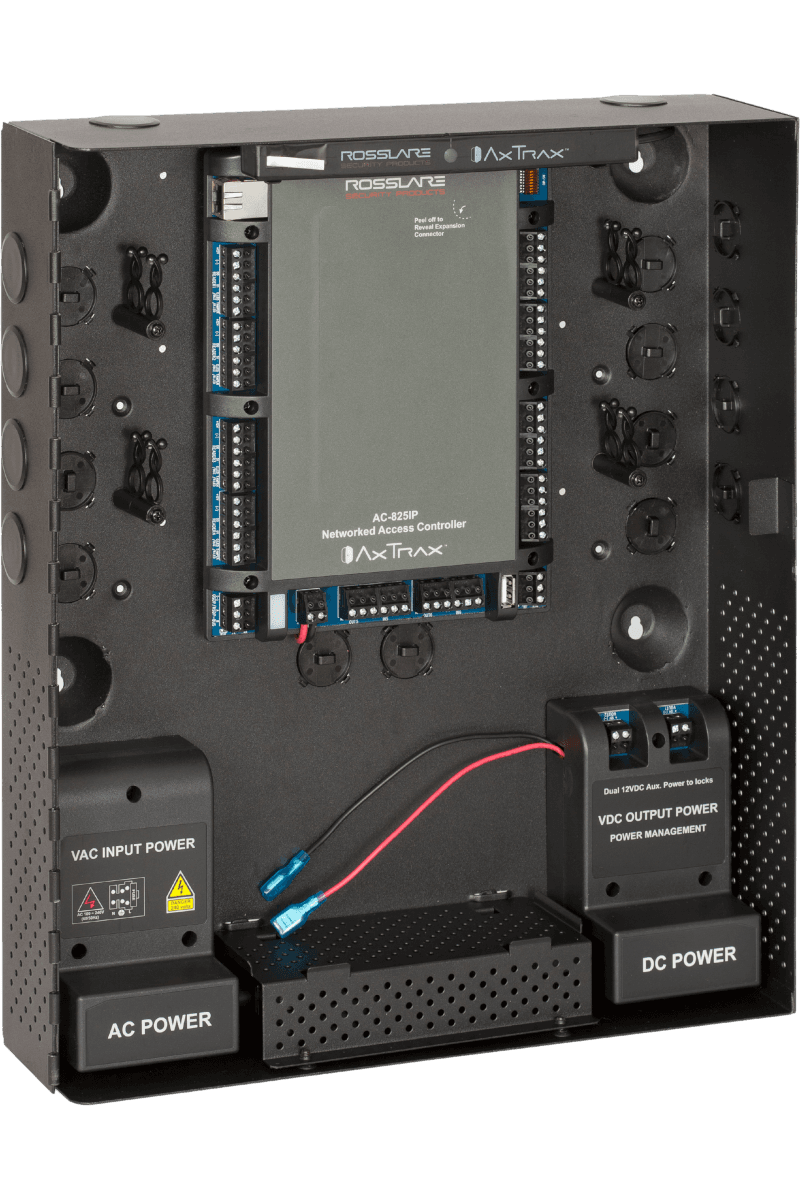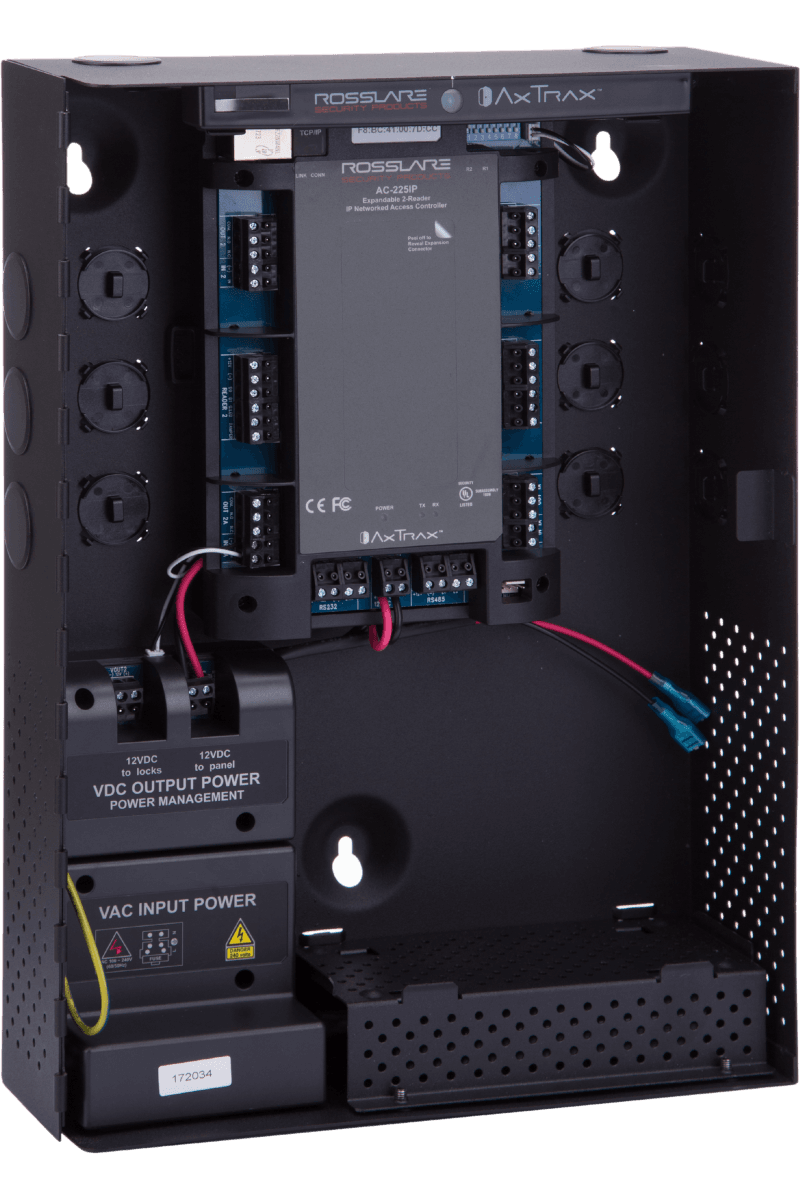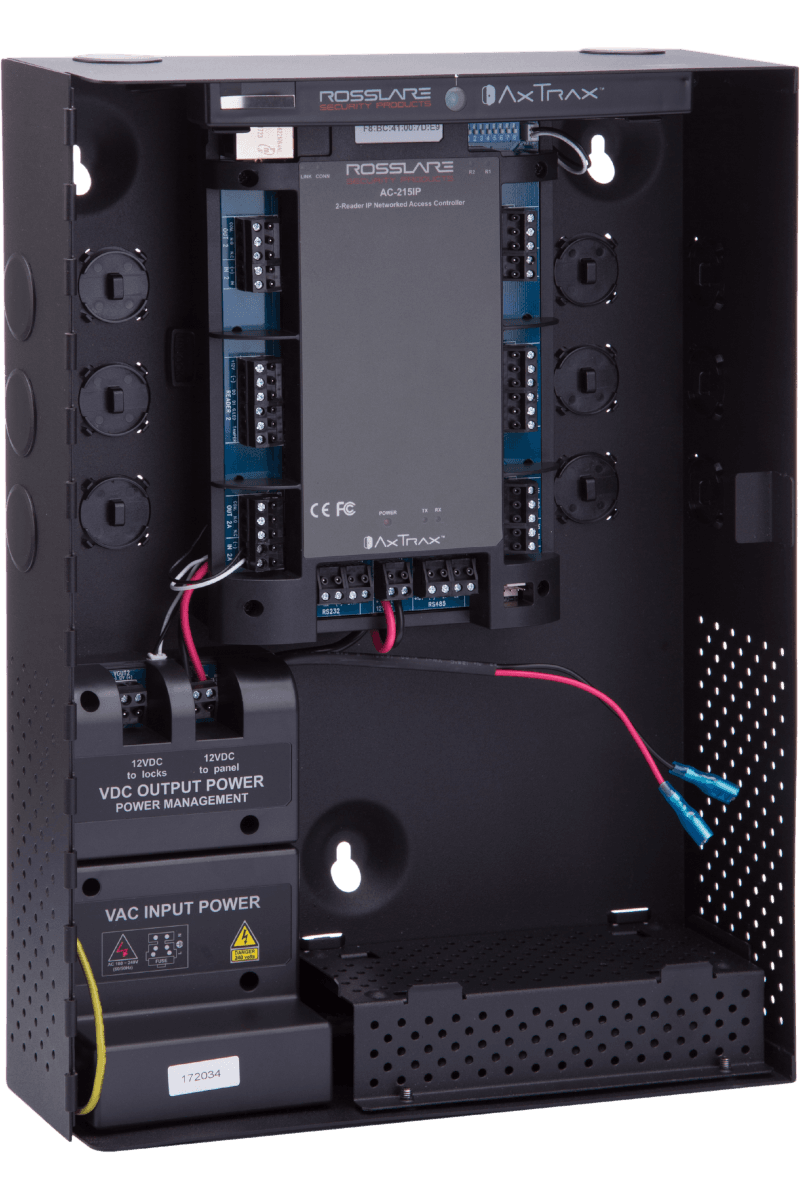Reader controllers
A reader controller is the central component of an access control system, managing the movement of people and determining who can access secured areas and when. Controllers integrate data from card readers, biometric scanners, and mobile authentication systems, working alongside electromagnetic locks, turnstiles, and other security devices. Acting as the "brain" of the system, controllers process information and enforce access rules according to programmed settings.
Features of reader controllers
The Rosslare door and entry controllers feature a modular and scalable design, making them suitable for both small and large access control systems. They support various authentication technologies, including:
- proximity card readers (125 kHz, MIFARE, DESFire)
- biometric readers (fingerprint scanning, facial recognition)
- mobile authentication (NFC, Bluetooth)
A key feature of Rosslare controllers is their ability to operate offline. In case of a lost connection to the server, controllers continue enforcing access rules, storing user permissions and event data locally. Once the connection is restored, synchronization happens automatically.
The most popular model, Rosslare AC-825IP, is an advanced network controller designed for large-scale projects with numerous doors. It supports up to 12 expansion modules, making it a cost-effective solution for extensive systems, including proximity readers, long-range RFID readers, and mobile authentication. It features advanced "Push" communication, OSDP support, and an intuitive installation process.
Key functions of door controllers
- User Management – add, remove, and modify user access rights, assigning different levels of access.
- Access Scheduling – define time-based access rules for specific users or areas.
- Event Logging & Reporting – track all events, including access attempts, denied entries, and security alerts.
- Integration with External Systems – seamless connection with alarm systems, CCTV surveillance, and other security solutions.
- Multi-Zone Access Control – define different access levels and advanced security rules such as Anti-Passback and Interlock.
Where are reader
controllers used?
Networked controllers are versatile devices used in a wide range of industries and facilities. Their flexibility and scalability allow access control systems to be tailored to the specific needs of any environment — from small offices to large industrial complexes.
Manufacturing companies
Corporate offices & commercial buildings
Healthcare facilities
Hotels & recreational facilities
Educational institutions
Most popular devices

Rosslare AC-825IP

Rosslare AC-425IP

Rosslare AC-225IP

